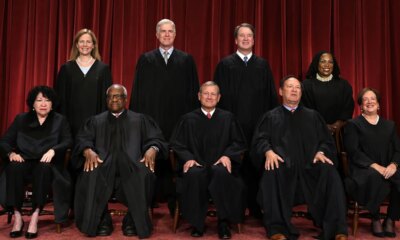It’s not easy to pick the most memorable Christmas in Salt Lake City history.
There was, of course, that first Dec. 25 in Utah for the Mormon pioneers. They worked on Christmas Day 1847 but paused briefly for a simple feast.
The original Catholic church in Utah — the old St. Mary Magdalene on 200 East between South Temple and 100 South — hosted the city’s first Christmas midnight mass in December 1871.
The Salt Lake Tribune helped launch the tradition of downtown holiday decorating in 1945 and the old ZCMI store (where Macy’s now sits) on Main Street started decorating its windows with Christmas candy in the early 1970s. Temple Square’s Christmas light displays began in 1965.
The Tabernacle Choir at Temple Square did not perform annual Christmas concerts until 2000. Willam Christensen choreographed “The Nutcracker” in California in 1944 but first brought it to Utah a decade later.
And memorable for all the wrong reasons, just after noon on Dec. 25, 1859, Salt Lakers had to dodge dozens of bullets from a Christmas Day gunfight that raged up and down Main Street.
Although all these holidays were unique, December 1875 stands out for me. It was the Christmas of Catholic nuns and slave cabin singers.
The Holy Cross sisters arrive
The Holy Cross Sisters had first arrived here from their convent in Notre Dame, Indiana, six months earlier. Sister Raymond (Mary) Sullivan and Sister Augusta (Amanda) Anderson traveled to Salt Lake City via train and stagecoach at the invitation of Father Lawrence Scanlan (soon to be Utah’s bishop), and more followed.
Scanlan hoped the nuns would help his fledgling Catholic community build schools and meet other human and spiritual needs. They did just that.
A few years earlier, Sister Augusta had started her Holy Cross work as a Civil War nurse. She managed two Union army hospitals so well in the 1860s that Gen. Ulysses S. Grant exclaimed, “What a wonderful woman she is. She can control the men better than I can.”
Utah bard Gerald (Gary) McDonough’s aunt was a Holy Cross Sister, too, but a few years later. In his poem “Porch Nuns,” McDonough colorfully described the long black Holy Cross robes, also donned by pioneers like Sister Augusta.
Calling their veils “corrugated halos that circled their heads, Like broad white-walled tires,” he explained that whenever they visited his family, intrigued Latter-day Saint neighbors would emerge to watch “the giant emperor penguins, milling about the McDonoughs’ front porch.”
One can only imagine how unusual it was for the Salt Lake City Latter-day Saints to see those “giant emperor penguins” milling about downtown for the first time during the Christmas season of 1875.
That December, the women of St. Mary Magdalene church organized a fair to raise money for the new Holy Cross Hospital. A large crowd — including Catholics and Latter-day Saints — attended.
The Tribune called it the “greatest attraction of the season,” one with music, plays, shooting galleries, “richly furnished refreshment tables,” and a “magnificent display of skillfully and delicately wrought fancy articles” for sale.
‘The Tennesseans’ perform
(Wikimedia Commons) Tennesseans concert poster shows Donavin’s original Tennessean slave cabin singers.
During the same week the grand fair was open, a popular singing group called “the Tennesseans” was in town as part of a national tour.
Contemporary newspaper articles and advertisements described the Tennesseans as “slave cabin singers” who performed “old plantation melodies and camp meeting hymns” from the South. These college students who once were slaves earned rave reviews wherever they sang.
After watching them perform, The Tribune said the widespread praise for the Tennesseans was well deserved. The Utah Evening Mail proclaimed them better than “any singers that have visited Salt Lake,” and the Deseret News called them the “most superb colored company in America.”
(The Salt Lake Tribune) December 1875 Tribune ad for the Tennesseans’ December 1875 concerts in Salt Lake City.
One evening just before Christmas, right after the Tennesseans had finished a concert at the old Salt Lake Theatre, they stopped by the fair. To the crowd’s delight, they sang a couple of songs.
And then they did something that made the Christmas of 1875 one of the most memorable in Utah history. The former slaves serenaded the Holy Cross Sisters.
The Tribune reported that the Tennesseans sang some of “their finest melodies” to honor “Mother Augusta for her services in checking the Negro massacre at Fort Pillow during the war.” The Utah Evening Mail called the impromptu concert “an expression of gratitude” to the Holy Cross Sisters whose “humane services in aiding to suppress the Fort Pillow massacre” and whose “uniform devotion to the relief of the soldiers” would never be forgotten.
About the massacre
(Wikimedia Commons) A hand-colored 1892 print of the Battle of Fort Pillow by Kurz and Allison, a well-known Chicago firm specializing in colorful and dramatic chromolithograph prints of American historical events. The original is in the Library of Congress.
In April 1864, Confederates massacred hundreds of Black Union soldiers stationed at a fortress the rebels had conquered in Tennessee. Sister Augusta cared for the surviving Fort Pillow victims at a nearby hospital she supervised.
It was difficult work.
Sister Augusta’s journal describes the appalling conditions of that hospital when she arrived: “Although we were tired and sick for want of sleep, there was no rest for us. We pinned up our habits, got brooms and buckets of water, and washed the bloodstained walls and scrubbed the floors. … The hospital was full of sick and wounded, but after some days, we succeeded in getting it comparatively clean.”
Notre Dame President Father William Corby — the chaplain of the Irish Brigade that famously fought at the Battle of Gettysburg — noted the full measure of Sister Augusta’s devotion: “The labors and self-sacrifices of the [Holy Cross] Sisters during the war need no praise here. Their praise is on the lips of every surviving soldier who experienced their kind and careful administrations.”
The grateful Tennesseans also remembered and thanked the Holy Cross Sisters with the gift of music. I cannot say for certain just what they sang 150 years ago in Salt Lake City during that most unusual Christmas of 1875. But I like to think that as the stars and the moon bathed the Wasatch foothills with a soft white light, the lovely lyrics of one song in particular — an old spiritual also born on a Southern plantation — rose gently into the crisp winter air and echoed off the snow-covered Oquirrh slopes, perhaps for the first time:
When I was a seeker,
I sought both night and day.
I asked the Lord to help me,
And he showed me the way.
Go tell it on the mountain,
Over the hills and everywhere,
Go tell it on the mountain,
That Jesus Christ is born!
(Courtesy photo)
Writer and attorney Michael Patrick O’Brien.
Note to readers • Michael Patrick O’Brien is a writer and attorney living in Salt Lake City who frequently represents The Salt Lake Tribune in legal matters. His book “Monastery Mornings: My Unusual Boyhood Among the Saints and Monks,” was chosen by the League of Utah Writers as the best nonfiction book in 2022. His new holiday novel, tentatively titled “The Merry Matchmaker Monks of Shamrock Valley,” will be published in time for Christmas 2026. He blogs at theboymonk.com.







































